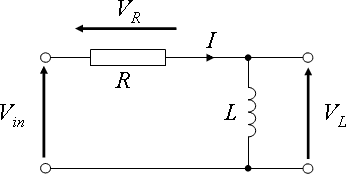在本教材中,我们将讨论许多变换,并假定读者对此至少有一定的先验知识。本教材并非旨在向完全没有接触过变换的读者教授变换主题。然而,我们将在这里提供一个简短的复习,以帮助那些可能不太记得这个主题的人重新熟悉。如果你还不了解**拉普拉斯变换**或**傅里叶变换**,强烈建议你使用此页面作为简单指南,并在其他资源上查找信息。具体来说,维基百科 上有许多关于这些主题的信息。
**变换**是一种数学工具,它将一个变量(或一组变量)中的方程转换为一个新变量(或一组新变量)。为此,变换必须去除所有“域变量”的实例,并添加一个新的“范围变量”。积分是变换的绝佳选择,因为定积分的极限将被代入域变量,并且该变量的所有实例都将从方程中移除。从域变量 *a* 转换为范围变量 *b* 的积分变换通常会以以下格式进行
![{\displaystyle {\mathcal {T}}[f(a)]=F(b)=\int _{C}f(a)g(a,b)da}](https://wikimedia.org/api/rest_v1/media/math/render/svg/f801154a19971faa7403d0f33e8d90cc24ac5747)
其中函数 *f(a)* 是要变换的函数,*g(a,b)* 被称为变换的**核**。通常,各种积分变换之间唯一的区别在于核。
**拉普拉斯变换**将方程从时域转换为所谓的“S 域”、“拉普拉斯域”或“复域”。这些都是同一个数学空间的不同名称,在本教材和其他关于该主题的书籍中可能会互换使用。变换只能在以下条件下应用
- 所讨论的系统或信号是模拟的。
- 所讨论的系统或信号是线性的。
- 所讨论的系统或信号是时不变的。
- 所讨论的系统或信号是因果的。
变换定义如下
![{\displaystyle {\begin{matrix}F(s)={\mathcal {L}}[f(t)]=\int _{0}^{\infty }f(t)e^{-st}dt\end{matrix}}}](https://wikimedia.org/api/rest_v1/media/math/render/svg/181273f083a28081347d287085b6c73bbd1e27a6)
拉普拉斯变换的结果已被广泛地制表。关于拉普拉斯变换的更多信息,包括变换表,可以在附录 中找到。
如果我们有一个时域中的线性微分方程

在初始条件为零的情况下,我们可以对方程进行拉普拉斯变换,如下所示

然后分离,得到
![{\displaystyle {\begin{matrix}Y(s)=X(s)[a+bs+cs^{2}]\end{matrix}}}](https://wikimedia.org/api/rest_v1/media/math/render/svg/701a65fa2a9da7c397b4f568110b787ad5d4ed55)
**拉普拉斯逆变换**定义如下

逆变换将函数从拉普拉斯域转换回时域。
拉普拉斯变换可以以一种直观的方式用于线性方程组。假设我们有一组线性方程


我们可以将这些方程排列成矩阵形式,如下所示

并用符号表示为

我们可以对两边进行拉普拉斯变换
![{\displaystyle {\mathcal {L}}[\mathbf {y} (t)]=\mathbf {Y} (s)={\mathcal {L}}[A\mathbf {x} (t)]=A{\mathcal {L}}[\mathbf {x} (t)]=A\mathbf {X} (s)}](https://wikimedia.org/api/rest_v1/media/math/render/svg/2bd605cb2b30b69e3c0195f9af6ae7ba6042757e)
这与对方程组中的每个单独方程进行变换相同。
在这里,我们将展示一个常见的一阶系统示例,即RL 电路。在电感器中,电流 I 和电压 V 之间的关系在时域中表示为导数

其中 L 是一个称为“电感”的特殊量,它是电感器的属性。
 RL 电路示例问题的电路图。VL 是电感器上的电压,是我们试图找到的量。
RL 电路示例问题的电路图。VL 是电感器上的电压,是我们试图找到的量。
假设我们有一个一阶 RL 串联电路。电阻的阻值为 R,电感器的电感值为 L,电压源的输入电压为 Vin。我们的电路的系统输出是电感器上的电压,Vout。在时域中,我们有以下一阶微分方程来描述电路


然而,由于电路本质上充当分压器,我们可以将输出表示为输入的函数,如下所示

这是一个非常复杂的方程式,除非我们使用拉普拉斯变换,否则很难求解

我们可以将分子和分母都除以 L,并将 Vin 移到另一边

并使用简单的表格查找,我们可以求解电路输入和输出之间的时间域关系

拉普拉斯变换对被广泛地列成表格,但我们经常会遇到没有列成表格的逆变换的传递函数和其他方程。如果我们的方程是一个分数,我们通常可以使用部分分式展开(PFE)来创建一组更简单的项,这些项将具有现成的逆变换。本节将简要回顾一下部分分式展开,供已经学过该主题的人参考。这个复习将以几个关于拉普拉斯变换的示例形式呈现。不熟悉部分分式展开的人建议阅读微积分了解更多信息。
如果我们有 S 域中的给定方程

我们可以将其扩展成几个更小的分数,如下所示

这看起来不可能,因为我们只有一个方程,有 3 个未知数(s、A、B),但实际上 s 可以取任何任意值,我们可以“代入”s 的值来求解 A 和 B,而不需要其他方程。例如,在上面的方程中,我们可以乘以分母,并消去项

现在,当我们设置 s → -2 时,A 项消失,只剩下 B → 3。当我们设置 s → -1 时,我们可以求解 A → -1。将这些值代回原始方程,我们有

请记住,由于拉普拉斯变换是线性算子,因此以下关系成立
![{\displaystyle {\mathcal {L}}^{-1}[F(s)]={\mathcal {L}}^{-1}\left[{\frac {-1}{(s+1)}}+{\frac {3}{(s+2)}}\right]={\mathcal {L}}^{-1}\left[{\frac {-1}{s+1}}\right]+{\mathcal {L}}^{-1}\left[{\frac {3}{(s+2)}}\right]}](https://wikimedia.org/api/rest_v1/media/math/render/svg/f137b29bc5710ea1acda4b41f2db28a658898cdf)
寻找这些较小项的逆变换应该比寻找整个函数的逆变换更容易。部分分式展开是寻找 S 域方程的逆变换的一个有用且通常是必要的工具。
给定以下传递函数

我们将方程两边乘以分母,使其成为有理式


然后我们合并同类项


比较系数
- A + B + C = 0
- -15A - 12B - 3C + D = 90
- 73A + 37B - 3D = 0
- -111A = -1110
现在,我们可以求解A,B,C 和 D
- A = 10
- B = -10
- C = 0
- D = 120
现在进行“拟合”
s2 - 12s + 37 的根是 6 + j 和 6 - j

不需要对D 的分数进行拟合,因为它已经完整了;也不需要对C 的分数进行拟合,因为C 等于零。


终值定理允许我们从 s 域方程确定时间域方程在时间趋于无穷大时的值。在控制工程中,终值定理最常用于确定系统的稳态值。函数极点的实部必须 < 0。

从我们关于系统指标的章节中,您可能会认识到系统在时间趋于无穷大时的值为系统的稳态时间。稳态值与预期输出值之间的差值,我们称之为系统的稳态误差。使用终值定理,我们可以在复 s 域中找到系统的稳态值和稳态误差。
求以下多项式的终值

我们可以应用终值定理

我们得到的值为

与终值定理类似,初值定理允许我们从 s 域方程确定系统的初始值(时间为零时的值)。初值定理最常用于确定系统的起始条件或“初始条件”。

我们现在将向您展示我们已经学过的三个函数的变换:单位阶跃、单位斜坡和单位抛物线。单位阶跃函数的变换由下式给出
![{\displaystyle {\mathcal {L}}[u(t)]={\frac {1}{s}}}](https://wikimedia.org/api/rest_v1/media/math/render/svg/bb34e01e003ac2d14b9615016628a1e79c3e1a72)
由于单位斜坡是单位阶跃的积分,我们可以将上述结果乘以 *1/s* 来获得单位斜坡的变换
![{\displaystyle {\mathcal {L}}[r(t)]={\frac {1}{s^{2}}}}](https://wikimedia.org/api/rest_v1/media/math/render/svg/e86b8bd43842f83b48a60d72543f630d91f87b89)
同样,我们可以乘以 *1/s* 来获得单位抛物线的变换
![{\displaystyle {\mathcal {L}}[p(t)]={\frac {1}{s^{3}}}}](https://wikimedia.org/api/rest_v1/media/math/render/svg/69d05875d6a2c9184534be7a4aebe6af61ab34b9)
傅里叶变换非常类似于拉普拉斯变换。傅里叶变换假设任何有限时间域信号都可以分解为无限个正弦(正弦和余弦波)信号的总和。在这个假设下,傅里叶变换将时间域信号转换为其频域表示,作为径向频率 ω 的函数。傅里叶变换定义如下:
![{\displaystyle F(j\omega )={\mathcal {F}}[f(t)]=\int _{0}^{\infty }f(t)e^{-j\omega t}dt}](https://wikimedia.org/api/rest_v1/media/math/render/svg/ccad40df03382f6ead04ba196a52314f1b7a4291)
现在我们可以证明,当以下条件成立时,傅里叶变换等价于拉普拉斯变换

由于拉普拉斯变换和傅里叶变换关系密切,对所有问题都使用这两种变换没有太大意义。因此,本书将重点关注拉普拉斯变换,几乎涵盖所有主题,除了直接处理频率值的那些问题。对于频率问题,使用傅里叶变换表示会让生活更容易。
与拉普拉斯变换一样,傅里叶变换也已在广泛的表格中列出。傅里叶变换的属性,以及常见变换的表格,可以在附录中找到。
逆傅里叶变换定义如下:

此变换与傅里叶变换几乎相同。

使用上述等价关系,我们可以证明,如果变量 *s* 是一个虚数,拉普拉斯变换始终等于傅里叶变换。但是,如果 *s* 是一个实数或复数变量,拉普拉斯变换就不同了。因此,我们通常定义 *s* 既有实部也有虚部,如下所示:

我们可以证明,如果 σ * = 0,则 *s = j*ω。
由于变量 *s* 可以分解为两个独立的值,因此在它自己的特殊“S 平面”上绘制变量 *s* 通常很有意义。S 平面在水平轴上绘制变量 σ,在垂直轴上绘制 *j*ω 的值。右侧显示了此轴排列。
微积分中有一个重要的结果被称为欧拉公式或“欧拉关系”。这个重要的公式将 *e*、*j*、π、1 和 0 的重要值联系起来

但是,这个结果是从以下等式推导出来的,将 ω 设置为 π

此公式将在本书的某些章节中广泛使用,因此现在熟悉它很重要。
MATLAB 符号工具箱包含自动计算拉普拉斯变换和傅里叶变换的函数。函数 laplace 和函数 fourier 可分别用于计算输入函数的拉普拉斯变换和傅里叶变换。例如,代码
t = sym('t');
fx = 30*t^2 + 20*t;
laplace(fx)
生成输出
ans =
60/s^3+20/s^2
我们将在附录中详细讨论这些函数。



![{\displaystyle {\mathcal {T}}[f(a)]=F(b)=\int _{C}f(a)g(a,b)da}](https://wikimedia.org/api/rest_v1/media/math/render/svg/f801154a19971faa7403d0f33e8d90cc24ac5747)
![{\displaystyle {\begin{matrix}F(s)={\mathcal {L}}[f(t)]=\int _{0}^{\infty }f(t)e^{-st}dt\end{matrix}}}](https://wikimedia.org/api/rest_v1/media/math/render/svg/181273f083a28081347d287085b6c73bbd1e27a6)


![{\displaystyle {\begin{matrix}Y(s)=X(s)[a+bs+cs^{2}]\end{matrix}}}](https://wikimedia.org/api/rest_v1/media/math/render/svg/701a65fa2a9da7c397b4f568110b787ad5d4ed55)





![{\displaystyle {\mathcal {L}}[\mathbf {y} (t)]=\mathbf {Y} (s)={\mathcal {L}}[A\mathbf {x} (t)]=A{\mathcal {L}}[\mathbf {x} (t)]=A\mathbf {X} (s)}](https://wikimedia.org/api/rest_v1/media/math/render/svg/2bd605cb2b30b69e3c0195f9af6ae7ba6042757e)











![{\displaystyle {\mathcal {L}}^{-1}[F(s)]={\mathcal {L}}^{-1}\left[{\frac {-1}{(s+1)}}+{\frac {3}{(s+2)}}\right]={\mathcal {L}}^{-1}\left[{\frac {-1}{s+1}}\right]+{\mathcal {L}}^{-1}\left[{\frac {3}{(s+2)}}\right]}](https://wikimedia.org/api/rest_v1/media/math/render/svg/f137b29bc5710ea1acda4b41f2db28a658898cdf)


































![{\displaystyle {\mathcal {L}}[u(t)]={\frac {1}{s}}}](https://wikimedia.org/api/rest_v1/media/math/render/svg/bb34e01e003ac2d14b9615016628a1e79c3e1a72)
![{\displaystyle {\mathcal {L}}[r(t)]={\frac {1}{s^{2}}}}](https://wikimedia.org/api/rest_v1/media/math/render/svg/e86b8bd43842f83b48a60d72543f630d91f87b89)
![{\displaystyle {\mathcal {L}}[p(t)]={\frac {1}{s^{3}}}}](https://wikimedia.org/api/rest_v1/media/math/render/svg/69d05875d6a2c9184534be7a4aebe6af61ab34b9)
![{\displaystyle F(j\omega )={\mathcal {F}}[f(t)]=\int _{0}^{\infty }f(t)e^{-j\omega t}dt}](https://wikimedia.org/api/rest_v1/media/math/render/svg/ccad40df03382f6ead04ba196a52314f1b7a4291)




